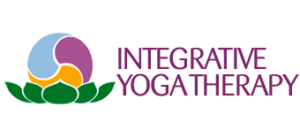5 Steps to Create a Yoga Therapy Program For Your Students*
Here’s how to integrate the physical, energetic, psychological, and spiritual to create a journey of true healing.
By Joseph Le Page
For more than 15 years, I’ve been teaching the Healthy Heart Program, a 10-week yoga and wellness program for individuals with hypertension and Type 2 diabetes. Still, each time a new program begins, I feel a sense of anticipation, even a slight nervousness, as I meet the group of new participants for the first time.
The Healthy Heart Program, like other yoga therapy groups we offer, has a very different feeling from a yoga class for the general public. Many of the participants have learned about yoga very recently. Many have been sedentary for much of their lives. Many have never sat like this in a circle where they are going to share something about themselves and their lives with strangers. Most have never had the time—we could even say the luxury—to stop and think about their role in their own healing process.
Most of the participants have come to this group because of a recommendation from their healthcare providers, and this, in itself, is relatively new. Fifteen years ago, these yoga therapy groups were met with curiosity, even some skepticism.
Today, those attitudes have almost reversed to the point where there is an understanding in many healthcare settings that, when all else fails, yoga works. This acceptance of yoga therapy in healthcare is positive overall, but often lacks a deeper understanding of how yoga heals.
So, how does yoga heal?
What I’ve discovered in more than 20 years of working in yoga therapy is that while yoga techniques, such as asana and pranayama, are a key part of the healing process, the deepest and truest healing comes from the cultivation of positive qualities, called bhavanas. Each of the 10 weeks of the Healthy Heart Program takes one of these qualities as its theme, and by the end, the participants have developed a new way of seeing themselves, life, and other beings—which I feel is the essence of yoga healing.
This 10-week journey of healing is based on three essential principles of yoga therapy. First among these is that the yoga therapy journey is a homecoming to a place of inner balance, awareness, and wholeness that, however distant, is always present as a potential. Yoga therapy sees each person as an expression and reflection of the infinite possibilities and intelligence of the source energy. The skill and practice of the yoga therapist comes through an in-depth understanding of all the facets of yoga, in order to open the appropriate doorway to the student’s own potential for health, healing, and awakening, all of which is already present.
The second principle is that the healing journey of each individual is multifaceted and in line with the five koshas, the different dimensions of our being. These include the physical, energetic, psycho-emotional, higher wisdom, and spiritual dimensions. Yoga therapy group programs and individual sessions include methods and techniques for integrating and healing at each of these levels.
The third principle defines the role of the yoga therapist: our scope of practice. We create appropriate yoga programs for healing based on the student’s needs for optimal wellness at the level of each of the koshas. We then serve as a guide or mentor for the journey of healing and self-discovery. Rather than offering a diagnosis and treatment for a specific condition, the yoga therapist uses their skills and intuition to bring together the optimal methods, techniques, and approaches among all the tools of yoga to support the student in remembering their own innate healing resources. This process respects the student’s pace and needs for self-exploration and discovery.








